New Jersey Butterfly Club
A chapter of the North American Butterfly Association (NABA)
Wild Indigo Duskywing
Erynnis baptisiae
Identification: Very small—1.3” (between size of Dreamy Duskywing and Juvenal’s). Above: FW and HW dark, mottled brown, with base of FW, particularly in males, often an oily black, and paler area present at bend of wing. Several very small glassy spots in FW, including a wrist "bracelet," and 2 additional spots aligned with it; usually lacks a cell-end spot. HW dark brown with inconspicuous, blurry, submarginal spots. Female is much more conspicuously mottled above on both wings and has somewhat more-prominent glassy spots in FW. Below: FW and HW in both sexes dark brown with rows of small, pale, submarginal spots. Similar species: Wild Indigo is noticeably smaller than Juvenal's and Horace's, and even in the female, the glassy FW spots are much smaller. The male in particular appears much blacker than either of the 2 larger duskywings, and both sexes lack the cell-end spot seen on the upper FW.
NJ Status and Distribution: Resident. Common and widespread throughout.
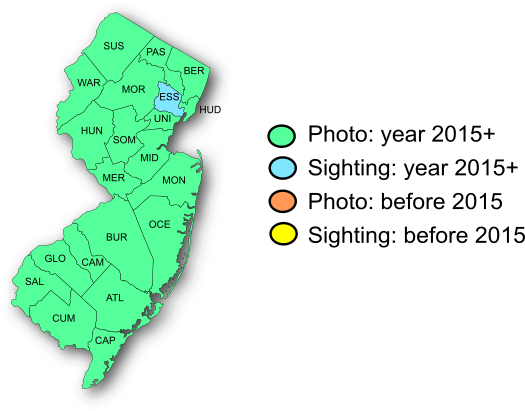
Habitat: Almost any open area, including disturbed habitats. Sometimes visits gardens, where it likes to nectar on mints.
Flight Period: Three broods, resulting in one extended flight period from mid-April to mid-October. Extreme dates: North Jersey 4/4—10/28; South Jersey 3/30—10/25.
Caterpillar Food Plants: Wild Indigo (Baptisia tinctorum) and, locally, perhaps Wild Lupine (Lupinus perennis). However, within the last few decades the main host plant has become the introduced Crownvetch (Coronilla varia). May use other vetches as well.
Overwintering Stage: Caterpillar.
Good Locations: Assunpink WMA, Mountainside Park, Stahl Natural Area, and just about any open habitat throughout the state.
Comments: The widespread planting of Crownvetch along roads to control erosion has benefited this species to the point where it is now the most common and widespread duskywing in NJ. The rise of this species appears to coincide with the decline of Persius and Columbine duskywings—neither of which has been documented in NJ for several decades. It is also possible that these species are overlooked owing to their extreme similarity to the pervasive Wild Indigo. Any location where a duskywing is seen laying eggs on Columbine (Aquilegia canadensis) or on Wild Lupine—the larval food plant for Persius Duskywing—should be reported to the Recent Sightings page of this website.
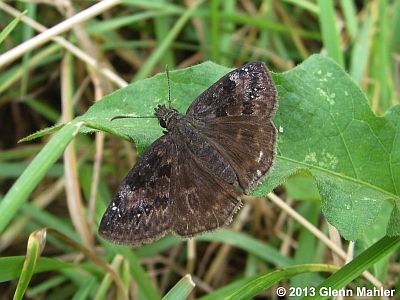
Male, Whittingham WMA, Sussex Co., NJ, 7/10/10.
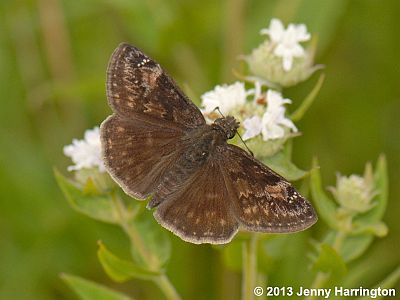
Female, Flatbrook-Roy WMA, Sussex Co., NJ, 7/16/07, on Virginia Mountain Mint.
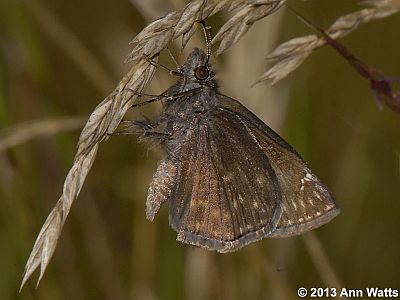
Blue Mountain Lakes, Sussex Co., NJ, 7/31/07.
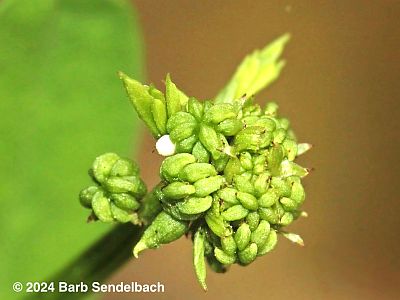
Egg on flower buds of Crownvetch (Securigera varia), a non-native caterpillar food plant for Wild Indigo Duskywing.
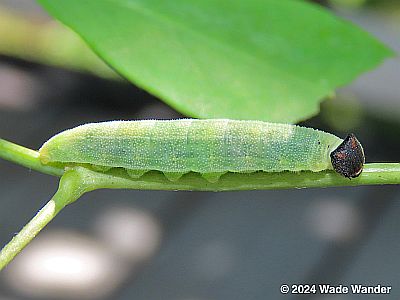
Late-instar caterpillar on Goldenbanner (Thermopsis sp.), Sussex Co., NJ, 8/5/24.
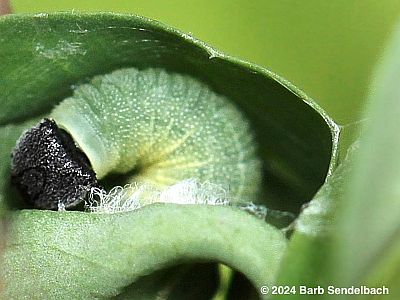
Caterpillar on Crownvetch, 6/26/22.
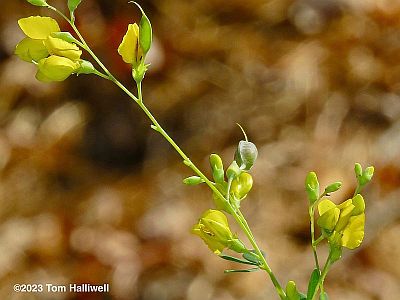
Wild Indigo (Baptisia tinctoria), the native caterpillar food plant for Wild Indigo Duskywing.